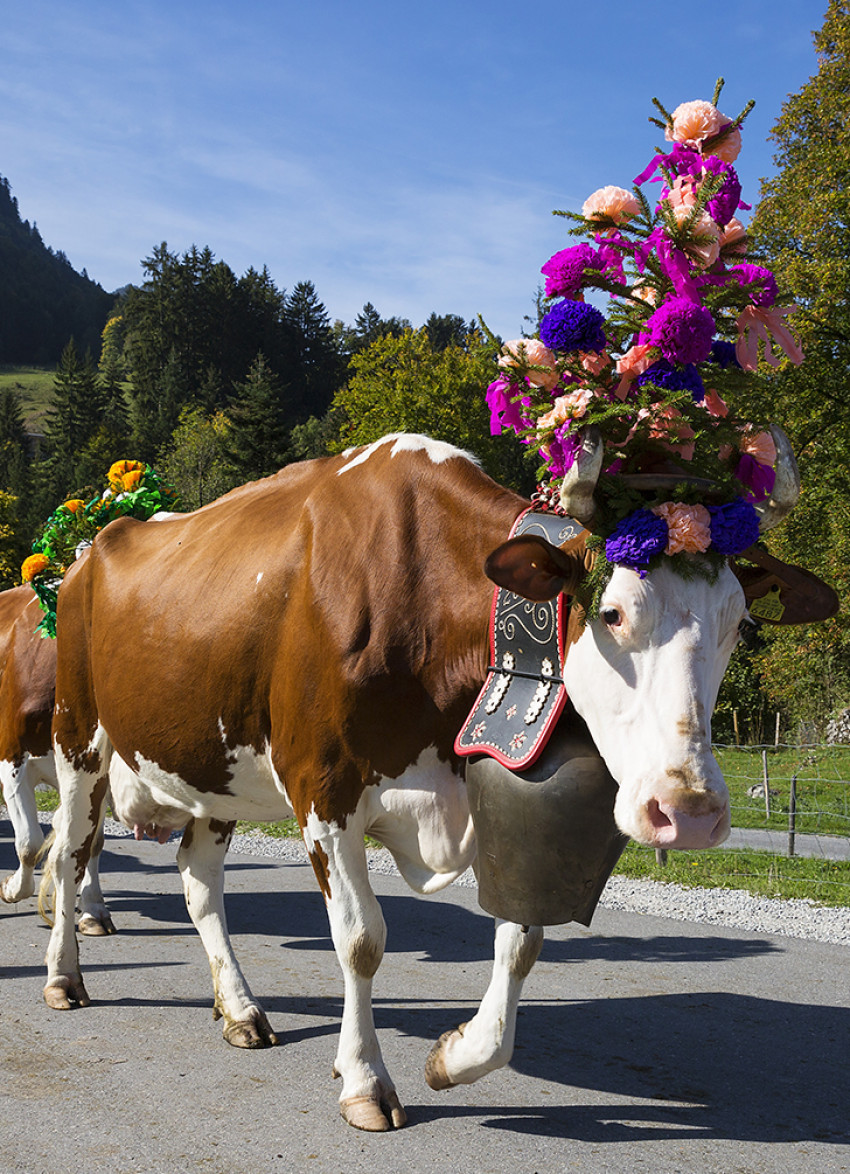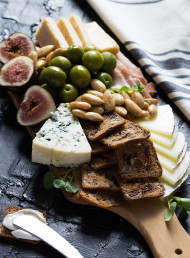Stories of cheese: All the cows' bells

Standing at the top of an alp near Gstaad, ankle-deep in luscious, greener-than-green grass, there's only one thing on the brain – cheese.
Among a myriad of colourful wild flowers and herbs, beautiful silence and glorious, unploughed summer pastures, is where some of the finest raw-milk cheeses in the world are created.
Spanning the alps from France, Germany and Austria, through to Switzerland, Italy and Croatia, is the birthplace of cheeses like Gruyere, Comte, Beaufort, Etivaz, Berkase and Fontina d’Aosta.
In Switzerland and throughout many parts of France, only cheese that is made on the mountains, from fresh, fragrant raw alpine milk, from May to October at over 3,000 feet, can carry the prestigious label “alpage". Unbeknown to most, a mere 2 per cent of Swiss cheeses meet this specific criteria. Those made on lower pastures or when are fed hay in winter are called mountain cheese.
At the end of summer, the cheesemakers return from the mountains with their cheese and their cows, garlanded with flowers and huge bells. The whole town celebrates and the cheeses are divided up according to the number of cows owned by each family.
The best known of these is Le Gruyere AOP and Le Gruyere d’Alpage AOC made in the mountains surrounding the small medieval town of Gruyères, in southern Switzerland, since at least 1115. Weighing at least 35 kilograms, the large wheels need around 400 litres of fresh milk per cheese. After pressing, the cheese wheels are submerged in a salt bath for 24 hours, then stored on pine shelves, washed with salted water and turned over every day.
During the next six months, the whopping wheels are turned and brushed with salted water, to encourage the development of a sticky orange-brown rind that contributes to its supple, dense texture and distinctive nutty, savoury flavour.
Recently, a smaller, lesser-known Swiss cheese L’Etivaz AOP has found its way down the alps and into the hearts of cheese lovers from around the world. Smaller than most gruyere (weighing roughly between 15–35kg) and made only between May 10th and October 10th, this cheese is produced by around 100 families in the Vaud canton bordered by Lake Geneva and France.
Each maker follows a recipe that has been passed down through generations, creating their own unique twist on this flavoursome, beloved style of cheese. Ripened for around 5–18 months, each is superbly nutty, rich and dense, with a depth of flavour and character only obtainable when the animals graze upwards of 20–35 different grasses, flowers and wild herbs, creating milk that is left unpasteurised.
In the Savoie region of the French alps, you'll find the most widely-known gruyere-style of cheese, Beaufort AOC. Made for over 2,000 years, there are distinctly different types of Beaufort – Beaufort d’été (made in summer) and Beaufort d’Alpage. By law, this cheese must be made with the milk of the native Tarantaise and Abondance cows.
Weighing over 45 kilograms, it takes the milk of 45 cows from two milkings (500 litres or 130 gallons) to make just one wheel of Beaufort and they need at least 4 months and preferably 12 mountain cellars, to achieve their full flavour. Beaufort is richer and creamier than other mountain cheeses, boasting hints of wild honey, rich, sweet butter and floral, herbaceous notes on the finish.
So, if you ever find one of these alpage cheeses within close reach, sprawled on the grass on the top of a Swiss alp, breathing in the scent of meadow flowers and basking in sunlight, listen for the tinkling of the bells – if you have the right cheese you will hear and taste the mountains.
Something to try: Beaufort, Comte Tunnel 24Months, Comte 'Marcel Petite' Reserve, Comte Fort Lucote Portion 200grams, Gruyere Suisse Fribourg, Gruyere De Bourgogne.
If you're based in Auckland, try the best of the mountain cheeses at La Fromagerie in Newmarket. For more information, visit their website here.
To read more about cheese master Juliet, see her website, The Cheese Web.
latest issue:
Issue #114
Autumn has arrived, and with it, the latest issue of dish, jam-packed with recipes that will have you fizzing to get in the kitchen! With a long Easter lunch featuring perfectly pink, blushing roast leg of lamb and wildly decadent baked mashed potatoes with caramelised onions, to simply scrumptious chocolate treats and sensational seasonal baking this issue has you covered - we reckon the Hot Cross Buns are our best yet! Salads make way for soothing soups, pies, puddings and our cover star beef cheek ragù with spaghetti – a must-make dinner for family and friends. With over 60 recipes in our latest issue there’s plenty of inspiration to keep you busy – and well-fed! Don’t forget to share your dish dishes with our Facebook community.

 BROUGHT TO YOU BY Ile de France
BROUGHT TO YOU BY Ile de France




